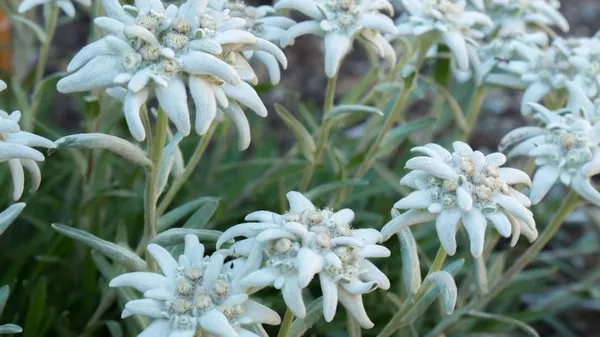Chamomile, with its delicate white petals and gentle aroma, has long been cherished for its medicinal and relaxation-inducing properties. But can you eat chamomile flowers raw? This article delves into the topic of consuming chamomile flowers, exploring their edibility, potential benefits, culinary applications, and precautions.
The Edibility of Chamomile Flowers
Chamomile, scientifically known as Matricaria chamomilla or Chamaemelum nobile, is a flowering plant that belongs to the daisy family (Asteraceae). The flowers of chamomile are often used to make herbal infusions and teas, appreciated for their soothing and calming effects. While chamomile flowers are generally considered safe for consumption, whether they can be eaten raw is a common question.
Yes, chamomile flowers are edible raw. The flowers have a mild, slightly sweet flavor and a crisp texture. They can be added to various dishes to enhance both visual appeal and taste. However, moderation is key, as consuming large quantities might lead to digestive discomfort for some individuals.
Nutritional Profile of Chamomile Flowers
Chamomile flowers, although not a significant source of nutrients, offer some valuable compounds:
1. Flavonoids: Chamomile contains flavonoids like apigenin, quercetin, and patuletin, which possess antioxidant and anti-inflammatory properties.
2. Terpenoids: The presence of terpenoids contributes to chamomile’s potential anti-anxiety and sedative effects.
3. Vitamins and Minerals: Chamomile provides trace amounts of vitamins such as vitamin A, vitamin C, and minerals like magnesium and potassium.
Culinary Uses of Chamomile Flowers
Chamomile flowers can be creatively incorporated into various culinary endeavors:
1. Salads
Add a handful of fresh chamomile flowers to green salads to lend a unique flavor and a touch of elegance.
2. Garnishes
Use chamomile flowers as a beautiful, edible garnish for desserts, cocktails, or even savory dishes.
3. Infused Water
Float chamomile flowers in pitchers of water for a subtly infused beverage, perfect for hydration.
4. Baking
Incorporate dried chamomile flowers into baked goods like muffins, scones, or shortbread cookies for a delicate floral essence.
5. Herbal Butter or Oil
Infuse butter or oil with chamomile flowers to create a unique ingredient for cooking or baking.
Remember to clean the flowers thoroughly before using them in your dishes.
Potential Health Benefits
Chamomile has been traditionally valued for its potential health benefits, which extend beyond its use in teas and infusions:
1. Digestive Aid
Chamomile may help alleviate indigestion, bloating, and gas due to its anti-inflammatory properties. Drinking chamomile tea or incorporating the flowers into your diet might promote digestive comfort.
2. Skin Health
Topical application of chamomile extracts may help soothe skin irritations, such as minor burns and rashes, thanks to its anti-inflammatory and antioxidant effects.
3. Sleep and Relaxation
Chamomile’s calming properties are well-known for promoting relaxation and sleep. While eating the flowers might not yield the same potency as a concentrated tea, their inclusion in a bedtime routine could still offer mild relaxation benefits.
4. Antioxidant Support
The presence of flavonoids in chamomile contributes to its antioxidant activity, which helps combat oxidative stress and reduce the risk of chronic diseases.
Precautions and Considerations
While chamomile flowers are generally safe for consumption, there are a few considerations to keep in mind:
1. Allergies
Individuals who are sensitive to plants in the aster family, such as ragweed, marigolds, and daisies, might also experience allergic reactions to chamomile. If you have known allergies, exercise caution when trying chamomile for the first time.
2. Pregnancy and Medications
Pregnant or breastfeeding women should consult their healthcare provider before significantly increasing their chamomile intake, as its effects during these stages are not fully understood. Additionally, if you are taking medications, especially blood thinners or sedatives, consult your doctor, as chamomile might interact with certain medications.
3. Moderation
While chamomile flowers can be a delightful addition to your diet, consuming them in moderation is recommended. Large quantities might lead to gastrointestinal discomfort.
Harvesting and Storing Chamomile Flowers
If you’re considering using chamomile flowers in your culinary endeavors, here are some tips for harvesting and storing:
1. Harvesting: Choose flowers that are fully open with vibrant white petals. Gently pluck the flowers from the stem.
2. Drying: To preserve chamomile for later use, lay the flowers in a single layer in a cool, dry place. Once dried, store them in an airtight container away from direct light and heat.
Conclusion
Chamomile flowers can indeed be eaten raw, adding a touch of flavor, visual appeal, and potential health benefits to your dishes. From salads to infused water, their uses are versatile and can elevate your culinary experiences. However, it’s essential to be mindful of allergies, potential interactions with medications, and the importance of moderation. By incorporating chamomile flowers wisely, you can explore their unique flavors and potential well-being enhancements.


